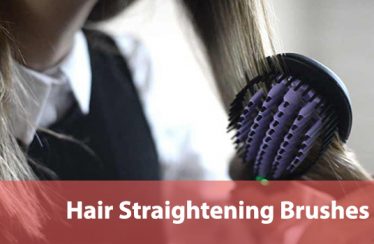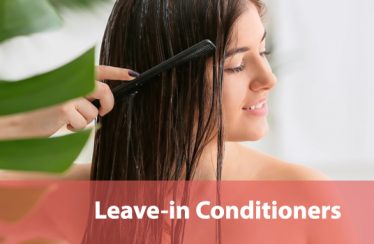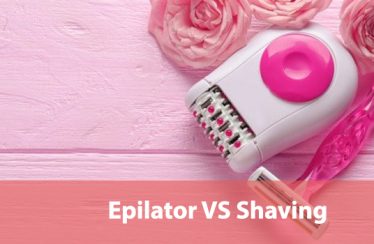Hair and hair removal is one of the most important aspects of personal grooming. Well-kept hair, beards, and even eyebrows all play a huge role in your overall appearance.
But there’s one type of hair that often gets overlooked, despite being just as important as the others. The hair growing on and out of your ears.
Managing your ear hair is a little different than managing other types of hair. It can be more difficult to reach and effectively trim or remove. It’s also a little more dangerous to treat yourself since your inner ear is an exceptionally important, but also extremely delicate part of your body.
That doesn’t mean you shouldn’t tend to your ear hair. Only that you need to be careful doing it. Don’t worry, we’ll go over everything you need to know to effectively care for your ears and ear hair. We’ll even talk about why you have hair growing in such a strange place.
The Three Types of Ear Hair
There are three different types of ear hair, but only two of them are ever visible. We’ll talk about the third as well, simply because it’s a fascinating piece of body function. The first two types of hair are both possible candidates for removal, depending on their location, density, thickness, and color.
Outer Hair
Outer ear hair is any hair growing on your ear, but outside of your ear canal and inner ear. Most people get this kind of hair at some point. The only parts of your body that don’t grow hair at all are the soles of your feet, the palms of your hands, and your lips.
Testosterone is associated with growing more ear hair, though the exact mechanism isn’t known. Since testosterone levels increase from puberty on for most men, that means that your ears are increasingly likely to grow noticeable outer hair as you get older.
Outer hair is a candidate for removal as soon as it becomes noticeable, although it’s up to you whether the outer ear hair needs to be removed. Some people will never get noticeable hair, mostly growing thinner clear hairs.
Others will develop thick, long, dark hairs that can be distracting without removal or a hairstyle that covers the tops and sides of your ears.
Fortunately, this hair doesn’t have a significant functional purpose, so removing it shouldn’t cause any problems. Its main goal is as an initial dust catch to protect your inner ear, but there are other hairs, and even the main structure of your outer ear, serving the same purpose.
Inner Ear Hair
Inner ear hair is a little different. This hair is slightly less common, usually less visible, and more functional. That doesn’t mean you shouldn’t remove it, only that it requires a little more care, and should only be removed if it’s visible.
Your ear canal (not your inner ear, but the physical structure leading to your inner ear) is filled with small hairs. These hairs help hold ear wax in place and filter what can get into your ears. You won’t be able to (and shouldn’t) remove all these hairs.
Usually, when people talk about removing inner ear hair, they’re actually removing outer hair that happens to grow closer to the ear canal. When it is inner ear hair it’s usually the inner ear hairs closest to the entrance of the ear canal.
While removal of the visible hair is a solution for aesthetic problems, too much inner ear hair can be problematic in other ways. If your inner ear hair is uncomfortable, or you suspect that it’s impacting your hearing, you should consult with a doctor.
Note: Excessive inner ear hair may also increase your risk of swimmers’ ear. That’s because it increases the surface area available for bacteria and fungi to grow, so pathogens that are specialized for these areas have more space to grow.
Hearing Hairs
The third type of ear hair is in the inner ear and won’t ever be removed. It’s worth noting, however, because it’s interesting, and because it helps demonstrate how important it is to be careful when removing ear hairs.
The hearing hairs are located in your inner ear, where they are in a small tube filled with fluid. This helps with sound transfer in your inner ear. The movement of the liquid also bends the hairs, telling your brain where your body is located in space.
This is why a ruptured eardrum can make you queasy and dizzy. The ruptured drum disrupts that delicate hearing and balance system, preventing it from functioning properly.
Since your hearing hairs are completely enclosed, you don’t have to worry about accidentally removing them. But, it is possible to rupture your eardrum with bad ear hair removal techniques, disrupting your hearing and balance system until your eardrum heals.
Damage to these hairs is also thought to be permanent, which may be why some people experience partial hearing loss after their eardrums are ruptured. While the eardrum itself can heal, the delicate machinery behind it may not.
So, the name of the game with ear hair removal is Be Careful. If you’re at all uncomfortable with your chosen ear hair removal method, consider paying a professional, or at least consulting with one before you begin.
Doctors, dermatologists, spas, and other hair removal experts should all be able to provide sound advice in this regard if you have any concerns.
Some Things to Consider
As with any grooming and hair care technique, there are some things you should consider before you try a new hair removal method. We’ll talk about the specific options in just a moment but knowing these factors ahead of time will help you make an informed decision.
Pain Tolerance
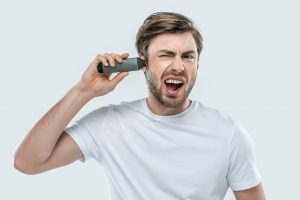
While not usually something most men have to consider when it comes to personal grooming, it’s an important consideration for ear hair removal. Virtually all ear hair removal methods have a small risk of pain or discomfort if you accidentally nick yourself or misuse a tool.
We all want to avoid pain. No shame in that. The game of life throws more than enough curveballs without adding even more discomfort into the mix.
But some methods of ear hair removal have more than a small chance of causing discomfort. Options like electrolysis and waxing are guaranteed to be at least a little uncomfortable. Others, like using an electric shaver have other downsides but are less likely to be painful.
Before you book an appointment for long-lasting hair removal methods, spare a thought for how much discomfort you’re willing to endure. You should also think about how often you’re willing to go through that discomfort since some methods are more permanent than others.
Frequency
Frequency is a good measure for how much time you’re ultimately going to spend on ear hair removal. Even methods that are quick in the short term can turn into a major time-eater if it has to be done every few days.
In general, the most comfortable and low-skill hair removal methods are higher frequency methods. Meaning you’ll need to spend time on hair removal more often with those removal methods.
If you want to spend less time on hair removal, you’re probably looking at higher skill and less comfortable removal. But time is life. The more time you spend on hair removal the less time you have for drinks with the guys or anything else.
How Much Hair You Need to Remove
Some hair removal methods are better for more hair, while others are better for hair that’s sparse.
Depending on your hair type and density, you may combine a couple of different removal methods, or you may find that one method, in particular, is much more effective.
One instance where density really matters is waxing. Waxing is less effective and more uncomfortable, for men with especially thick ear hair.
But men with thinner hair may be able to get away with less frequent removal and don’t need to bring out the big guns to address the problem.
Required Skill
Requires skill is a double whammy. At home, the required skill level is the difference between quick and clean hair removal, and the occasional nick missed hair or worse consequences. Fortunately, most at-home hair removal methods have a fairly gentle learning curve, so you’ll quickly master your chosen hair removal method.
But some hair removal methods require significantly more skill. Options like electrolysis and laser hair removal need to be performed by professionals. While there are at-home alternatives available, they tend to be much riskier, and less effective.
As a general rule, go slow. Allow yourself to build the skill level required naturally, and don’t try to remove all your ear hair at once while you’re learning.
Price
In an ideal world, price wouldn’t be a concern. But we don’t live in an ideal world (I also don’t think we’d need to talk about ear hair removal in an ideal world, let’s be honest), and price is definitely a factor.
Some methods are incredibly affordable. These are usually low-skill but high-frequency options. The more permanent the solution, the more expensive it’s likely to be.
That said, while permanent solutions are a larger 1-time expense, hair removal methods that appear cheaper in the short term build up over time.
Depending on how quickly you want to be ear hair free, it may be worth saving up for a more expensive treatment rather than reaching for a fast and cheap solution.
Types of Ear Hair Removal
There are several options for ear hair removal. If you already use hair removal methods for other body hair, many of these will be familiar.
But, don’t rush to use your existing hair removal tools on your ears. While these methods are similar to other body hair treatments, almost all of them use tools specialized for your ears.
Electric Trimmers
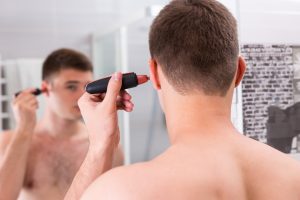
One of the most common, fastest, and cheapest options is using an electric trimmer. No, not the same trimmer you use to maintain your facial hair. You’ll need an ear trimmer, also often called a nose trimmer or a detail trimmer. The Philips Norelco 5100 is a good and affordable option.
Electric trimmers are good for outer ear hair but are less effective for inner ear hair. The biggest problem is that electric trimmers can’t easily reach around the cartilage structures in your ear. Taking protective guides off the trimmer to make them smaller significantly increases your risk of nicks and damage.
These trimmers are a low-cost option, but they require you to trim every couple of days. Some men can get away with only trimming once a week or even once every other week. But, for most people, trimmers are only a good option if you’re willing to add ear hair removal to your regular grooming routine.
But, they’re also a low skill level, low risk, and low pain option. Almost anyone can use an unmodified ear or nose trimmer safely. Nicks, when they do happen, are low pain and low risk.
If this is your first foray into hair removal and personal grooming, electric trimmers are a good place to start.
Wax

Yes, gentlemen, there is a reason for men to keep wax in their grooming kits too. This isn’t just an option for women, and you don’t even need to go in for major manscaping to make use of wax. There’s specialty ear wax (no, not the stuff you naturally produce) designed to help you remove both inner and outer ear hairs.
It’s not a good idea to use body wax for your ears. For one thing, ear hair is usually a different texture, length, and overall type than general body hair. So, waxes designed for the rest of your body may be ineffective, or, in the case of inner ear hair, may remove too much hair at once.
Waxes work by binding to the individual hairs so that when it hardens it pulls several hairs out by the root. There’s no denying it. Waxing is uncomfortable. Pulling a bunch of hair out from the root is painful, but, since pulling is quick, it doesn’t last very long.
This option is also significantly longer lasting than trimming. Trimming doesn’t prevent the hair follicle from continuing to grow the same strand of hair, so the hair comes back almost immediately.
Since waxing removes the hair from the root, the follicle has to create new hair before growth resumes. Some hair follicles may even go into a rest period before growing new hair.
Plus, like any method that removes the hair from the root, there is a chance of damaging the hair follicles themselves and reducing the size and growth rate of the individual hairs.
Waxing, full disclaimer, does not usually produce a significant reduction in hair growth, but you may notice needing to wax less often after using wax regularly for a few months.
You’ll need wax, wax papers, and a means of heating the wax for this method. You want to wax to be hot enough to be easily malleable, but cool enough to be comfortable on your skin. Most waxes cool quickly, so you only have a couple of minutes to apply the wax before it cools.
As it cools, it will harden. It may take a little experimentation to see what point works best for your hair. Some people see success with wax that is still malleable, while others need to let the wax harden almost completely before pulling it off.
You’ll know you succeeded when pulling the wax off comes with a sharp, brief, pain. If you have any remaining hairs, you may want to do a second wax application or clean up with a pair of tweezers.
The good news, waxing lasts an average of 2-8 weeks, depending on how fast your hair grows.
Tweezers
Another manual method for hair removal, often preferred for inner ear hair, is plucking with tweezers. A good job with tweezers has many of the advantages of waxing but takes a good bit longer, and many consider it more painful.
Largely, we recommend using tweezers as a cleanup method, not a primary method of ear hair removal.
That’s because each hair hurts when you pull it out. So, pulling out more than a couple of hairs becomes an extended period of discomfort. But, some people do prefer plucking with tweezers over waxing because you have more control over how much hair is removed at once.
When it comes to inner ear hairs especially, pulling out dense, closely growing hair all at once can cause serious skin irritations.
One warning with tweezers. This tool is the most likely to cause damage to your eardrum used improperly. You should never put tweezers in your ear. Not only does the hair in your ear canal have an important purpose, but you could cause serious damage.
Electrolysis
Electrolysis is the new kid on the block. If you’re interested in this therapy, it’s important to seek out a certified dermatologist who performs the procedure. Unfortunately, depending on where you live, electrolysis may not be readily available.
That’s unfortunate because electrolysis is the only FDA approved therapy for truly permanent hair removal.
Electrolysis cannot be done except by professionals. That’s partially because you have to be able to identify the hair follicle specifically, and also because proper hygiene and technique are critical for preventing infections.
What is electrolysis?
Electrolysis is the process of inserting an ultra-fine needle into your hair follicle and then briefly running a low electric charge through the needle. This kills any existing hair as well as the follicle itself. Since hair follicles don’t generally regenerate, killing the follicle is a permanent solution.
However, electrolysis requires several treatment sessions. For one thing, you need to cover the whole treatment area. While ears are relatively small, and can probably be treated in a single session, there’s another problem.
Body hair of all types often have multiple hair follicles. So, when you eliminate one hair follicle, other, previously inactive, hair follicles nearby may start growing hair. In order to get permanent and complete hair removal, you need to treat these hair follicles until no more become active.
For most people, this only takes 2 or 3 treatments per area. Of course, if you’re getting other areas treated in addition to your ears, you should plan on a few more trips.
Electrolysis is described as mildly uncomfortable all the way through to truly painful depending on the treatment area and your pain tolerance. But, it’s permanent.
Individual sessions are more expensive than trimming or waxing, but usually less expensive than laser treatments. After the initial touchup treatments, you shouldn’t need additional electrolysis.
Laser Hair Removal
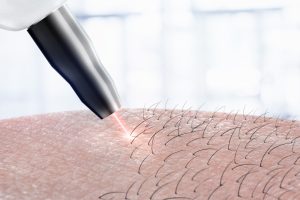
Laser hair removal is a little easier to find than electrolysis and initially seems to produce similar results. Lasers also burn out the hair follicle and reduce hair growth over the course of several treatments. However, the results are less permanent, and your skin requires a protective gel during sessions.
The laser will initially produce slower thinner hair growth. Additional treatments eventually stop hair growth entirely. But, the damage isn’t extensive enough to prevent hair follicles from healing. So, most people need to receive annual booster treatments to stay hair-free.
Since the hair on your ears is usually thinner and sparser than the hair on the rest of your body, you may be able to go longer without follow up laser hair removal treatments.
It’s worth noting that while usually long-lasting and mostly comfortable, laser hair removal is usually the most expensive option.
Scissors?
One last thing. Some people do use scissors to trim the hair in their ears like they would nose hairs or a mustache. While this method can technically work, we don’t recommend it.
Like tweezers, scissors in and near your ear is an immediate risk. Beyond the possibility of nicking your ears, or even cutting into the cartilage, scissors should never be used on inner ear hairs. One wrong move is far too likely to puncture your eardrum.
Beyond the risks, scissors are also much less effective than the alternatives. They cannot cut the hairs close enough to the skin to be truly invisible, you’ll always have some prickly hairs left over. Used on your inner ear hairs you can both potentially go too deep and reduce the natural dust barrier your ears are supposed to have.
So, skip the scissors. If you want a cheap and easy way to clip your ear hair, buy a trimmer!


